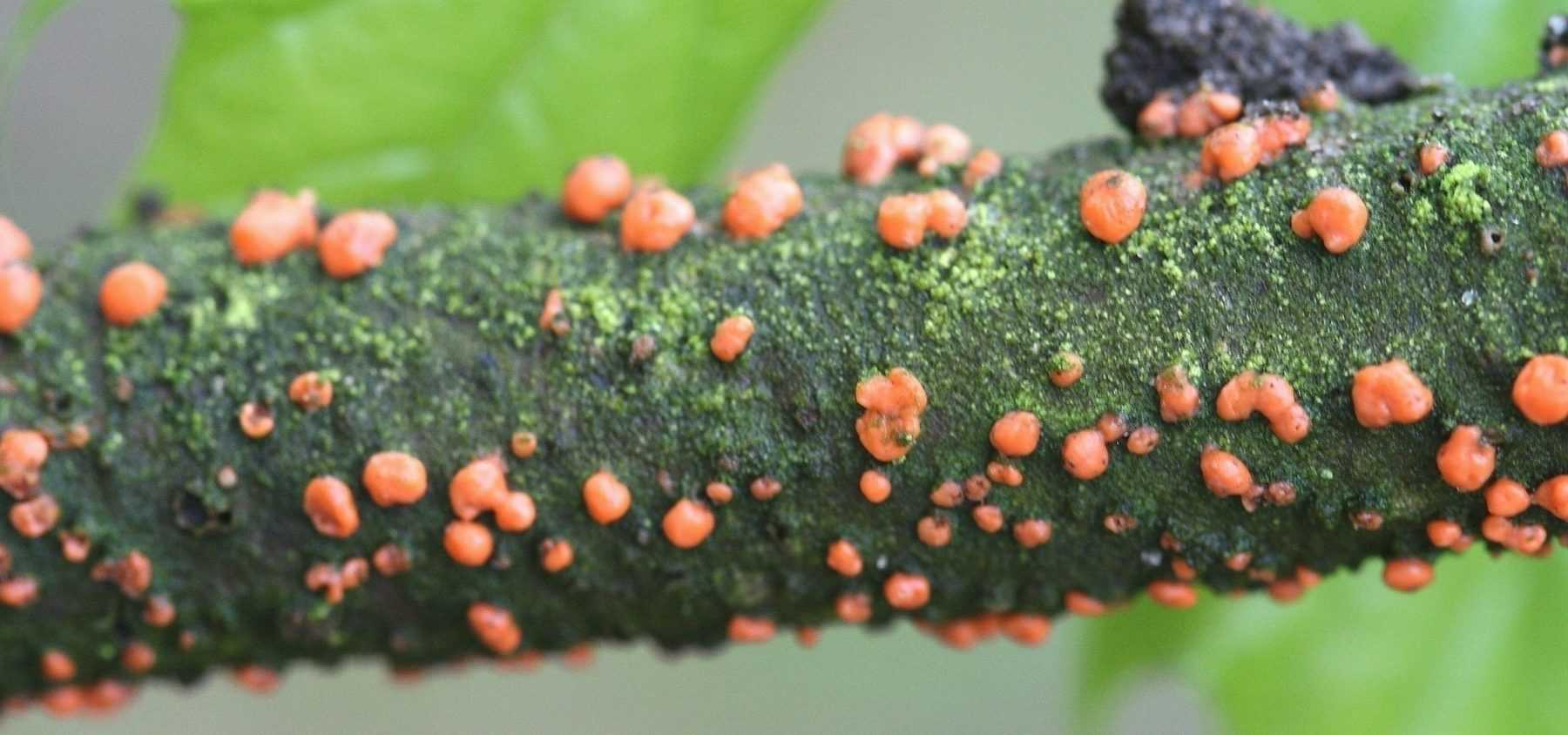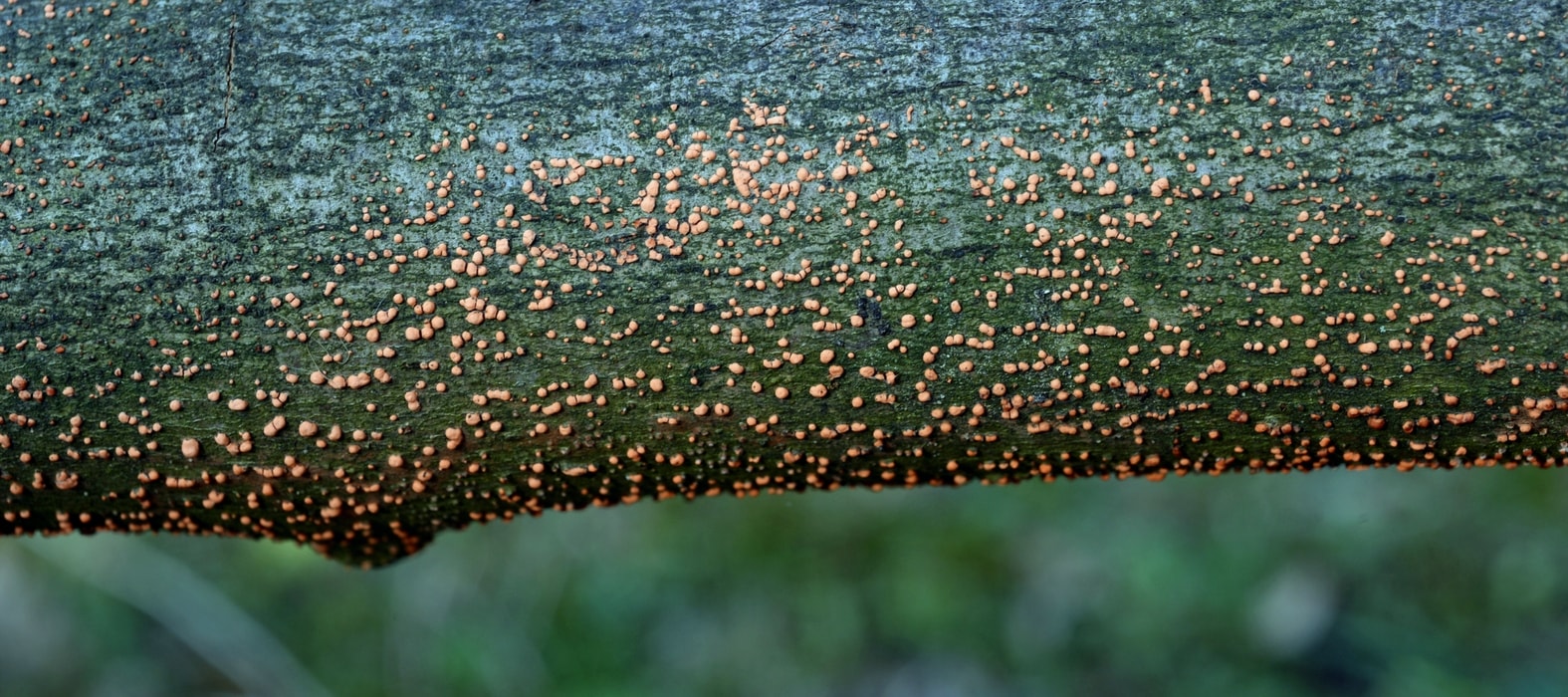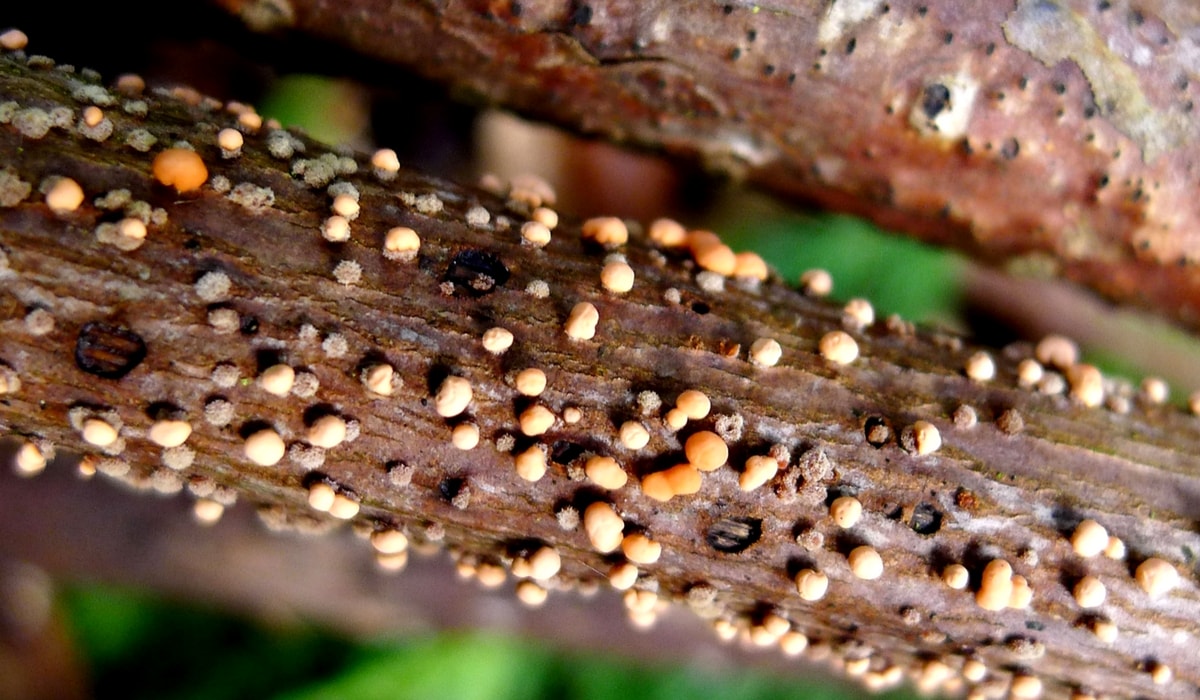
How to prevent coral spot disease
or Nectria cinnabarina
Contents
Coral spot disease is caused by a fungus, Nectria cinnabarina, which leads to the dieback of twigs and branches on trees already weakened by pruning wounds or other diseases. It can affect many different trees and is characterised by the presence of small coral-coloured spheres on the bark. This is a serious disease that can quickly spread to other trees and shrubs. Discover all our advice for identifying this disease at the first symptoms and preventing it from spreading!
Which plants are affected?
Coral spot disease can affect many different trees: maples, horse chestnuts, alders, albizias, hazels, limes, magnolias, as well as fruit trees (apple, plum, cherry trees…) and shrubs. It mainly targets plants already weakened by disease or injuries. However, in urban environments it becomes more virulent and can cause the death of young trees. It spreads quickly from one plant to another.
How to recognise coral spot disease?
This disease is easily identified by the appearance of smooth, spherical pustules on the bark, often measuring between 0.5 and 1 cm in diameter. They are initially pink or red, later turning brick-coloured or black as they mature. In summer, smaller red clustered balls may sometimes appear.
When they reach maturity, the spheres open and release spores that will settle in bark cracks or wounds of other plants, infesting them in turn.
This fungus causes cankerous lesions, altering the wood structure and leading to sudden desiccation of branches. It clogs the vessels that carry sap. The buds dry out, the bark becomes damaged and cracks, and entire branches eventually die.
How to prevent disease from taking hold?
This fungus primarily develops on dead wood or weakened trees. Keeping plants healthy and maintaining a tidy garden (for example by removing dead branches) helps reduce the risks. Apply fertiliser to your plants in spring and monitor watering while avoiding excess moisture.
When pruning your trees and shrubs, make clean cuts with disinfected tools, and cut just after a branch or bud which acts as a sap drawer. Then, apply a wound sealant to prevent spores from settling. Another technique is to use clay mixed with Bordeaux mixture to cover the wound. Wounds are entry points for many diseases and fungi, so they should not be exposed to the open air until they have healed.

What solutions once the disease has appeared?
- As soon as you spot coral spot disease on your trees or shrubs, immediately cut off the affected branches, using secateurs, a lopper or a saw.
- If your shrubs are entirely affected, cut them down to prevent the fungus from spreading to other plants.
- Burn all the removed parts afterwards.
- Use pruning seal to promote healing and prevent spores from re-establishing in the wood.
- Spray a copper-based fungicide, such as Bordeaux mixture.
- Do not plant other species susceptible to this disease nearby or in locations where plants have already been affected.
- Keep your garden tidy and collect dead branches from the ground to burn them, as they may harbour spores.
- Subscribe!
- Contents


































